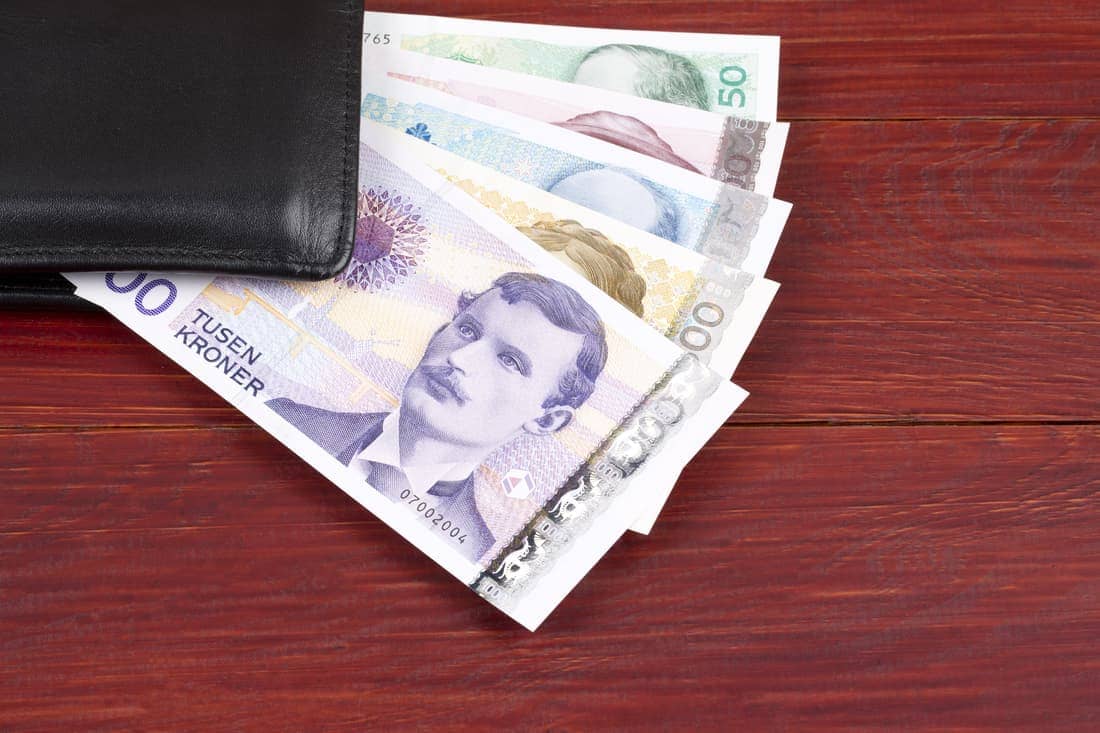Norway Currency Guide: An In-Depth Look at Norwegian Krone
When you think of Norway, you might picture dramatic fjords, northern lights, and a modern society built on both tradition and innovation. But if you’re planning a trip to the Land of the Midnight Sun, investing in global currencies, or building a collection, you’ll need to know more about the Norwegian krone.
At US First Exchange, we help travelers, collectors, and investors gain access to world currencies securely and conveniently. This guide is designed to be your one-stop resource on the Norwegian currency – its history, today’s role in the global economy, banknotes and coins, and practical tips for handling money in Norway. Whether you’re just curious about Norway currency or need to understand payment methods and exchange rates, we’ve got you covered.
A Brief History of the Norwegian Krone
The Norwegian krone (plural: kroner) was introduced in 1875, replacing the old speciedaler currency at a rate of 4 kroner per speciedaler, when Norway joined the Scandinavian Monetary Union - a system created by Denmark and Sweden to stabilize trade and economic ties. The union pegged currencies to gold, ensuring a fixed exchange rate system. Each country issued its own version of the krone or krona, but they were interchangeable at equal value across borders.
The union dissolved during World War I, yet the krone remained Norway’s official currency. Norway briefly maintained the krone on a gold basis (until 1931), but gold convertibility was suspended during the Great Depression. Over time, the krone’s value has shifted with Norway’s economic trajectory, from periods of inflation to the massive growth spurred by the country’s oil and gas exports in the late 20th century.
The Norwegian Krone from 1914 to 1992
During World War II, Norway was occupied by Germany. The krone was then unofficially tied to the Reichsmark (1 krone ≈ 0.60 reichsmark) until the occupation ended. After the war, the krone was pegged to the British pound at a rate of about 20 kroner = 1 pound. By the late 20th century, global currency markets pressured Norway to move away from fixed rates. In late 1992, Norges Bank abandoned its fixed rate and adopted a floating regime for the Norwegian Krone. Since then, the krone’s value has been set by the market.
Modern-Day Norwegian Monetary Policy
Today, the Norwegian krone is a floating exchange rate currency, meaning its value fluctuates according to market supply and demand rather than being tied to gold or the US dollar. Norges Bank, Norway’s central bank, manages the krone and oversees the nation’s monetary policy, with interest rates and inflation control playing central roles.
Its official monetary policy is a flexible inflation-targeting regime: the operational goal is to keep consumer-price inflation close to 2% over time. This means the central bank adjusts its policy rate to stabilize prices and support full employment, without pegging the krone to any other currency.
Norway Currency Overview: Norwegian Krone (NOK) Today
 Summary
Summary
- ISO code: NOK
- Symbol: kr
- Central Bank: Norges Bank
- Currency type: Floating exchange rate
- Most common pairing: Norwegian krone vs. US dollar (NOK to USD)
Norway’s official currency is the Norwegian krone (abbreviated NOK, symbol “kr”), issued and managed by Norges Bank (the central bank of Norway). If you're wondering what is the meaning of kroner in English, the word “krone” means “crown” in Norwegian, reflecting its Scandinavian heritage and historical ties to the monarchy. When you hear “kroner,” it simply refers to the plural form, meaning “crowns.”
The krone is subdivided into 100 øre, but in practice, øre coins were discontinued in 2012 (small values are now handled electronically). The Norwegian krone is actively traded on foreign exchange trading platforms, though not as heavily as the euro, pound, or yen. Its value is closely tied to Norway’s natural resource wealth, particularly oil prices. Because of this, investors often see the krone as a “petrocurrency.”
NOK Exchange Rates and Economic Influence
The Norwegian krone (NOK) is one of the world’s more traded currencies (usually around 13th–15th by turnover). Its value relative to other currencies can move substantially, as it is sensitive to global commodity markets and interest rates. Crucially, oil and gas exports shape Norway’s economy, and thus the krone. Norway is a major oil-exporting nation, and energy makes up a significant share of its GDP and export earnings.
In practice, when oil prices rise, Norway’s economy tends to strengthen and the krone appreciates; when oil prices fall, the krone often weakens. For example, during the 2014–2015 oil-price crash, the krone dropped roughly 20% against the U.S. dollar. Norges Bank and market analysts watch oil and gas trends closely when assessing NOK volatility.
Here are some exchange rates of the NOK against the US dollar in the previous years.
- January 2002, 1 USD ≈ 9 NOK
- April 2008, 1 USD ≈ 5 NOK
- October 2008, 1 USD ≈ 7 NOK
- October 2019, 1 USD ≈ 9
- NOK March 2020, 1 USD ≈ 12 NOK
- December 2021, 1 USD ≈ 9 NOK
As of fall 2025, one U.S. dollar buys roughly 9.9–10.0 NOK. Similarly, one euro exchanges for about 11.6–11.7 NOK (ECB reference rate ~11.66 on Oct 1, 2025). Other currency pairs (e.g., NOK/GBP, NOK/JPY) move in step with these. Overall, the Norwegian krone tends to move in line with other high-yield commodity currencies, and it remains a relatively stable regional currency thanks to Norway’s large Sovereign Wealth Fund and prudent fiscal policy.
For travelers or investors, that means exchange rates can swing noticeably depending on global energy markets. As you can see, the Norwegian krone doesn’t undergo a years-long decline due to high inflation, poor economic policies, or similar factors, but tends to go up and down in relatively short time spans.
You can always check and monitor live NOK to USD exchange rate or vice versa using our currency converter, and even sign up for exchange rate alerts to lock in the best deal before buying.
Ready to sell?
Are you ready to sell your currency? Stop waiting and request a Shipping Kit. We will provide everything you need to ship and receive funds for currencies you own.
Norwegian Krone Banknotes and Coins in Circulation
If you’re handling money in Norway, you’ll encounter both Norwegian krone banknotes and Norwegian krone coins.
Current Norwegian Krone Banknotes
 The most recent series of Norway's currency banknotes, introduced between 2017 and 2019 by Norges Bank, celebrates Norway’s deep connection to the sea. Each note combines traditional imagery with modern design and robust security features to deter counterfeiting. They are issued in denominations of:
The most recent series of Norway's currency banknotes, introduced between 2017 and 2019 by Norges Bank, celebrates Norway’s deep connection to the sea. Each note combines traditional imagery with modern design and robust security features to deter counterfeiting. They are issued in denominations of:
- 50 krone: Depicts the Utvær Lighthouse and maritime signals such as a lighthouse beacon and the Big Dipper on the reverse.
- 100 krone: Features a Viking ship (the Gokstad ship) on the obverse and a globe, container ship, and the Orion constellation on the reverse.
- 200 krone: Shows a cod fish, representing Norway’s fishing heritage, and a fishing boat, net, and a lighthouse beacon on the reverse.
- 500 krone: Displays a rescue ship and ocean motifs on the obverse and an oil platform, North Sea pipeline networks, and an ammonite on the reverse.
- 1000 krone: Illustrates a wave motif symbolizing the power of the ocean and the horizon with water molecules on the reverse.
Security features include watermarks, holograms, color-shifting ink, and tactile elements, making the NOK notes safer and easier to verify. These measures protect against counterfeiting while ensuring accessibility.
Norwegian Krone Coins
NOK coins are widely used for everyday purchases, though electronic payment is increasingly dominant. The krone is nominally subdivided into 100 øre, but in practice, øre coins were discontinued in 2012. Current denominations include:
- 1 krone coin
- 5 krone coin
- 10 krone coin
- 20 krone coin
Each coin has unique designs, often showcasing maritime themes, royal symbols, or Norwegian heritage.
Special and Old Series for Krone Collectors
For currency collectors, older series of Norwegian krone banknotes and limited-issue coins offer fascinating pieces of history. Earlier notes depicted famous Norwegian figures such as painters, scientists, and writers. Retired series often become highly sought-after in the foreign exchange and collector’s markets, prized both for their artistry and their numismatic value.
Notable examples include the wartime “coin notes” (1kr and 2kr bills from WWI and WWII). Also, obsolete coins like the 50-øre (the smallest Norwegian coin, withdrawn in 2012) or commemorative bullion coins might interest collectors. In general, notes from before 2017 (Series VII and earlier) can still be exchanged at face value by Norges Bank, but pristine specimens may fetch premiums from collectors.
Historically, before 1875, Norway used the speciedaler as mentioned, but very few of those survive. The modern krone’s banknotes have changed periodically – for example, Series VI (1979–2001) and Series VII (1994–2017) have different designs and security features, and some collectible series (like the “face value” 5-kr and 10-kr notes) were replaced by coins in the 1960s–80s.
For active collectors, getting a specimen set of Norwegian notes (or proof coins) can be fun. You can find a complete list of the withdrawn Norwegian krone banknotes and coins that still can and no longer can’t be exchanged at the official Norges Bank website.For everyday travelers, the focus is simply on spending or exchanging valid kroner.
What Money Does Norway Use?
Finally, let’s clear up a common misconception. The Kingdom of Norway uses the Norwegian krone. Unlike many of its European neighbors, Norway is not part of the eurozone. It is part of the European Economic Area and has access to the EU’s single market, but it is not part of the European Union, so the Euro is not legal tender in Norway. While some tourist-oriented businesses might accept euros, the krone is the official currency, and it’s always best to use it.
However, you might be able to use the Norwegian krone in Swedish and Finnish towns bordering Norway and a few Danish ferry ports commonly used by Norwegians. This is a common practice because taxes are high in Norway, so people often go to these places to buy alcohol, tobacco, and food in bulk.
Payment Methods in Norway
 Norway is among the most advanced societies in terms of its payment system. Cash is still legal tender, but in practice, debit and credit cards are accepted almost everywhere. In fact, many Norwegians prefer electronic payment and rarely carry cash. Contactless and mobile payment methods (such as Apple Pay and Google Pay) are common. Online banking and various cash apps are very popular and becoming more dominant.
Norway is among the most advanced societies in terms of its payment system. Cash is still legal tender, but in practice, debit and credit cards are accepted almost everywhere. In fact, many Norwegians prefer electronic payment and rarely carry cash. Contactless and mobile payment methods (such as Apple Pay and Google Pay) are common. Online banking and various cash apps are very popular and becoming more dominant.
The party that was in government until October 2021, the Høyre, had pledged to remove the use of paper money by 2030. One step they took towards that goal was removing the requirement for businesses to accept cash payments. This could mean that Norwegian paper money might become collectible in the future.
However, while Norway has discussed experimenting with digital currency, the krone in its physical and electronic forms remains dominant. For travelers, this means you don’t need to carry large amounts of cash, but it’s still wise to have some Norwegian kroner on hand for small purchases, rural areas, or emergencies.
Tips for Handling Money When in Norway
Your best option is to exchange EUR or USD for NOK (krone) ahead if you plan to travel to Norway. You can buy Norwegian Krone online using our foreign currency exchange platform quickly, securely, and at competitive rates.
- Exchange before you travel: While you’ll find currency exchange offices in airports or cities, the rates can be much lower and the fees higher. With US First Exchange, you can convert your USD to NOK online at competitive rates, have the kroner securely shipped to your door, and avoid last-minute costs and hefty fees.
- Monitor exchange rates: Because of the krone’s link to oil prices and interest rates, its value can fluctuate. Use our currency converter to track the market and sign up for free exchange alerts to buy Norwegian currency when the rate is in your favor.
- Cards are king: Don’t be surprised if even small kiosks accept debit and credit cards. However, always have a few krone coins or low-denomination notes for vending machines, tolls, or rural areas.
- Tipping culture: Tipping is not mandatory in Norway. Service charges are usually included in bills. Rounding up or leaving 5–10% in restaurants for excellent service is appreciated but not expected.
- Know the cost of things in Norway: Norway is a famously expensive country. A coffee can run you 40 kr (about $4), and meals can easily exceed 200 kr ($20). Having an idea of the local cost of living will help you budget better.
Convert USD to NOK Securely: Buy (or Sell) Norwegian Currency Online
The Norwegian krone is more than just money; it’s a symbol of Norway’s independence, economy, and culture. From its origins in the Scandinavian Monetary Union to its role today as a floating currency tied to oil and gas, the krone carries weight both at home and abroad. Understanding Norwegian kroner, whether through their stunning banknote designs, their role in foreign exchange markets, or the practicalities of paying for coffee in Oslo, helps travelers and investors alike navigate and engage with Norway’s currency with confidence.
Not many banks and exchange offices in the U.S. offer Norwegian currency for exchange. At US First Exchange, you can buy NOK safely before you go at competitive rates using various payment methods, track live exchange rates, and even sell Norwegian Krone and convert your NOK to USD if you have any leftover currency.
We will deliver crisp bills to your doorstep in 24 – 48 hours, and your package will be fully insured, regardless of the amount you buy or sell, for your peace of mind.
FAQs
Anything else on your mind about Norway's currency or Norwegian money?
What Currency Is Accepted in Norway?
The official currency of Norway is the Norwegian krone (NOK), which is the only legal tender in the country. While a few tourist-oriented shops, hotels, or attractions may occasionally accept euros, they are not widely recognized, and exchange rates offered in these situations are usually unfavorable. Carrying kroner is the best way to ensure smooth transactions when paying for local goods and services.
Can I Use Euros in Norway?
Not typically. While some tourist shops or services may occasionally accept euros, the Norwegian krone remains the official currency, and using it is always the most reliable option. Norway stands apart from many of its European neighbors because it is not a member of the European Union itself, which means the euro is not recognized as legal tender in Norway.
Should I Exchange Money Before I Travel to Norway?
Yes, it’s always a good idea to exchange some money before traveling to Norway, especially for smaller purchases like transportation upon arrival. Buying Norwegian Krone ahead of time also helps you avoid high fees or unfavorable rates at airport kiosks. For the best value, use a trusted online exchange service like US First Exchange, which offers competitive rates, secure transactions, and insured delivery.
This way, you’ll have Norwegian currency ready before you even board your flight. While Norway is highly card-friendly and most shops, restaurants, and hotels accept debit and credit cards, having Norwegian kroner (NOK) on hand gives you peace of mind in situations where cards may not be accepted, such as rural areas, local markets, or public restrooms.
What Is a Kroner?
“Kroner” is the plural of “krone,” which means “crown” in English. It’s Norway’s currency unit of money, just like dollars in the US. Money in Norwegian is called “penger”, but “krone/kroner” refers to the actual currency used in Norway.
Ready to buy?
Are you ready to buy your currency? Stop waiting and request a Shipping Kit. We will provide everything you need to ship and receive funds for currencies you own.


